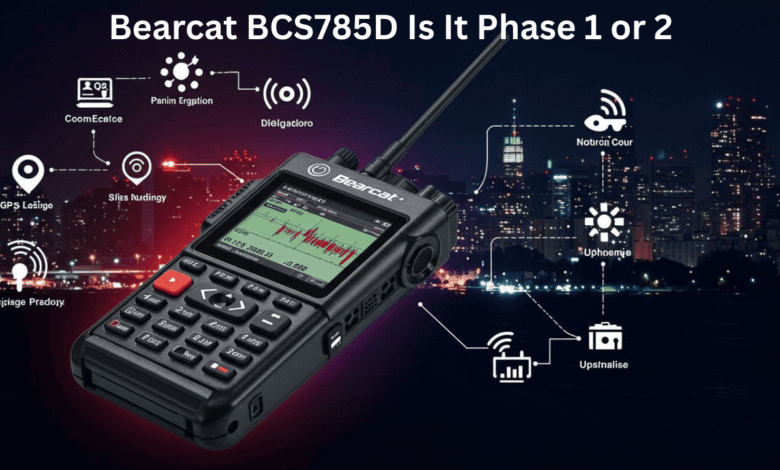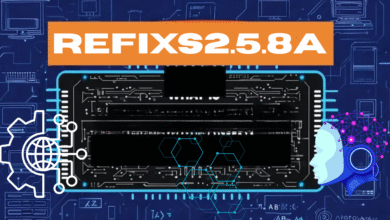Bearcat BCS785D Is It Phase 1 or 2 – Everything You Need to Know

The Bearcat BCS785D is a popular model among radio scanning enthusiasts, but one of the most common questions people ask is: bearcat bcs785d is it phase 1 or 2? Understanding the answer to this question is essential for anyone considering buying this scanner or wanting to know if it fits their local communication system requirements. In this guide, we will break down what Phase 1 and Phase 2 mean, where the Bearcat BCS785D fits, and whether it’s still a practical option today.
1. Understanding P25 Phase 1 and Phase 2
Before answering the question bearcat bcs785d is it phase 1 or 2, it’s important to understand the basics of the APCO Project 25 (P25) digital radio standards.
- Phase 1 uses Frequency Division Multiple Access (FDMA) technology, with one voice channel per frequency.
- Phase 2 uses Time Division Multiple Access (TDMA), allowing two simultaneous voice channels on the same frequency, improving efficiency and capacity.
Phase 1 is widely supported and has been in use for years, while Phase 2 is the newer, more efficient system increasingly adopted by public safety and emergency communication networks.
2. Bearcat BCS785D Technical Overview
When asking bearcat bcs785d is it phase 1 or 2, the technical specifications give us the answer. The Bearcat BCS785D is an older model scanner that supports analog and APCO P25 Phase 1 digital systems. It does not have the hardware capability to decode Phase 2 TDMA signals.
Key features include:
- Trunktracker III technology
- Support for Motorola, EDACS, and LTR trunked systems
- Wide frequency coverage, including 25–512 MHz, 806–956 MHz, and 1240–1300 MHz
- Compatible with APCO P25 Phase 1 systems via a digital card
This means it works perfectly for Phase 1 digital and analog systems but cannot handle Phase 2 transmissions.
3. Confirming Bearcat BCS785D Is It Phase 1 or 2
The answer to bearcat bcs785d is it phase 1 or 2 is straightforward: it is Phase 1 only. While the scanner is versatile for its time, it was manufactured before Phase 2 technology became widespread. Without the necessary TDMA decoding capability, it cannot process Phase 2 voice channels.
This limitation means that if your local communication system operates solely in Phase 2, you will not be able to hear those transmissions with this scanner. However, if your area still uses Phase 1 or mixed systems, it can still be an effective choice.
4. How Phase 1 Scanners Work in Phase 2 Environments
Some might wonder, bearcat bcs785d is it phase 1 or 2 and can it still pick up anything on Phase 2 systems? While it is a Phase 1 scanner, in some mixed-mode Phase 2 systems, certain talkgroups may still transmit in Phase 1, allowing the Bearcat BCS785D to receive them.
This means that even in areas transitioning to Phase 2, you might still catch partial traffic. However, as more agencies switch completely to Phase 2, the amount of accessible communication will reduce over time.
5. When the Bearcat BCS785D Is Still a Good Choice
If you are asking bearcat bcs785d is it phase 1 or 2 because you want to know whether it’s worth buying, the answer depends on your local system and scanning goals. This scanner is still a good choice for:
- Locations where public safety agencies still use Phase 1
- Hobbyists monitoring analog or older trunked systems
- People who want an affordable entry point into digital scanning without needing Phase 2
Its reliability, wide frequency range, and clear audio make it a solid unit for specific use cases.
6. Limitations of the Bearcat BCS785D
When discussing bearcat bcs785d is it phase 1 or 2, it’s also important to highlight its limitations:
- No Phase 2 TDMA support
- No DMR, NXDN, or other newer digital mode compatibility
- Lack of modern conveniences like GPS-based scanning or USB programming
- Older hardware may require maintenance or replacement parts
If your area is fully upgraded to Phase 2 or other digital systems, you’ll need a more modern scanner to receive those communications.
7. Comparing Phase 1 and Phase 2 Scanners
Understanding bearcat bcs785d is it phase 1 or 2 also helps in deciding whether to upgrade to a Phase 2-capable scanner. Here’s a quick comparison:
| Feature | Phase 1 Scanners (like BCS785D) | Phase 2 Scanners |
|---|---|---|
| Technology | FDMA | TDMA |
| Voice Channels per Frequency | 1 | 2 |
| Efficiency | Standard | Higher |
| Compatibility | Phase 1 only | Phase 1 & Phase 2 |
| Future-proofing | Limited | High |
If your goal is to stay current with evolving communication systems, Phase 2 scanners are more future-ready. However, for hobbyists in Phase 1 areas, the BCS785D is still capable.
8. How to Check If Your Area Uses Phase 1 or Phase 2
Since the question bearcat bcs785d is it phase 1 or 2 is tied to your local system, you should verify what your local agencies use. You can:
- Check local frequency databases
- Join online radio scanning communities
- Listen to sample transmissions from nearby agencies
If your area is still Phase 1 or uses a mix, the Bearcat BCS785D will still have value. If not, consider investing in a Phase 2 model.
9. Tips for Getting the Most Out of the Bearcat BCS785D
Even if you already know the answer to bearcat bcs785d is it phase 1 or 2, you can optimize its performance by:
- Updating frequencies and trunking system data
- Using an external antenna for better reception
- Placing the scanner in a high position away from interference
- Programming it for active talkgroups in your area
These steps can help you maximize the value of your Phase 1 scanner while it remains compatible.
10. Conclusion
The question bearcat bcs785d is it phase 1 or 2 has a clear answer: it is a Phase 1-only scanner. This means it works perfectly with analog and APCO P25 Phase 1 systems but cannot decode Phase 2 TDMA transmissions. While this limits its use in fully Phase 2 environments, it remains a reliable and effective choice for areas still operating on Phase 1 or mixed systems.
If your local communication setup supports Phase 1, the Bearcat BCS785D can still be a solid tool for monitoring public safety, emergency services, and other communications. However, if your area is transitioning or already fully upgraded to Phase 2, investing in a modern Phase 2-capable scanner would be a better long-term choice.
Frequently Asked Questions (FAQs)
1. What is the Bearcat BCS785D?
The Bearcat BCS785D is a trunking scanner that supports analog and APCO P25 Phase 1 digital communications. It is popular among hobbyists for its reliable performance and wide frequency coverage.
2. Bearcat BCS785D is it phase 1 or 2?
The Bearcat BCS785D is a Phase 1 scanner only. It does not support P25 Phase 2 TDMA transmissions, meaning it can only monitor Phase 1 systems or mixed systems that still broadcast in Phase 1.
3. Can the Bearcat BCS785D receive Phase 2 signals?
No, the Bearcat BCS785D cannot decode Phase 2 TDMA signals. In areas where systems have moved fully to Phase 2, this scanner will not pick up those communications.
4. Will the Bearcat BCS785D work in a mixed Phase 1 and Phase 2 area?
Yes, in some cases. If the system transmits certain talkgroups in Phase 1, the BCS785D can still receive them. However, any talkgroups transmitted in Phase 2 will be inaccessible.
5. How can I find out if my area uses Phase 1 or Phase 2?
You can check local frequency databases, ask in radio scanner forums, or listen to local transmissions to determine whether your area uses Phase 1, Phase 2, or a mix of both.



